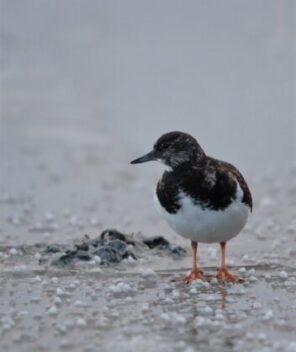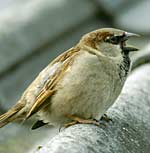PFAS: found 180 times more ‘forever chemicals’ in birds
These man-made toxic substances are often referred to as ‘forever chemicals’. There are thousands of different variants, and researchers are finding more and more of them.
Researchers studying birds and the food they eat are now finding much larger volumes of the toxic PFAS chemicals than before. The substances either never break down or degrade very slowly, which is why they are called ‘forever chemicals’.
PFAS (per- and polyfluoroalkyl substances) are a large group of synthetic environmental toxins, and you are most likely full of them too. Forever chemicals do not break down; instead, they accumulate in the natural environment and inside your body.
“PFAS have received a lot of attention in recent years. This is because they are so widely used in industry, at the same time as these substances can also be harmful to many different organisms,” said postdoctoral fellow Junjie Zhang, who was recently affiliated with NTNU.
Postdoctoral fellow Junjie Zhang talks about pollutants in this video and his work detecting them.
He is the lead author of an article that addresses new findings regarding the toxins. PFAS contain fluorine, and have received particular attention in Norway because they are used in ski wax, Teflon and fire retardants.
Possible and confirmed harmful effects include various forms of cancer, liver damage, cholesterol disorders, reduced fertility, hormone disorders, developmental disorders in children, and a weakened immune system.
- You might also like: Ski wax alters animals’ brains and livers
Finding more PFAS than before
Ideally, you do not want these substances in your body, but in practice, it is virtually impossible for humans and many other living organisms to avoid them.
Recent research and a new method for detecting PFAS bring both bad and good news. The bad news is that we are finding PFAS in places we have not previously found them. The good news is that this means we have become better at detecting these substances.
“The biggest increase is in the livers of wading birds. We found up to 180 times more PFAS than previously,” said Zhang.
Some of the increase may be due to a new analysis method.
“This suggests that previous methods have not been good enough at detecting certain types of PFAS,” said Zhang.
He was affiliated with the Department of Chemistry at NTNU during the study and collaborated with Professor Veerle Jaspers at the Department of Biology on a project funded by the Research Council of Norway (COAST IMPACT). He is now a postdoctoral fellow at the University of Copenhagen.
Investigating migratory birds and their food
The international research group analysed samples from migratory birds and the shellfish they eat.
“The East Asian–Australasian Flyway is an important route for millions of migratory birds, including wading birds,” Jaspers said.
As the name suggests, this migration route extends between Siberia and East Asia and large parts of Australia.
However, the populations of many bird species along this migration route are rapidly declining. The researchers wanted to find out whether exposure to environmental toxins could be a contributing factor.
The researchers took samples from 25 wading birds. In addition, they collected samples from 30 shellfish found in areas of China where migratory birds often stop to feed. Since birds – and humans for that matter – commonly ingest PFAS through food and water, it makes sense to test these sources for the substances too.
- You might also like: Hunting down toxic substances in sludge
Easier to detect substances
The researchers took both liver and blood samples from the birds. They used a new method to analyse the samples, called the Total Oxidizable Precursor (TOP) assay, developed by co-author Lara Cioni. This method makes it easier to detect certain types of PFAS.
A lot of research has been done on one group of PFAS called PFAAs (perfluoroalkyl acids), but little is known about the substances that can be converted into PFAAs. PFAAs are formed when other substances break down, and these substances are more easily detected using TOP.
“The TOP results show a significant increase in several types of harmful substances in all of the samples,” said Zhang.
Some of the findings suggest that many forever chemicals originate from sources we are not yet aware of, which is not particularly good news.
According to the researchers, the findings highlight how important it is to conduct more research on the substances that PFAS come from.
“We need to find out more about the sources, but also about the effects PFAS have on wading birds, other animals and humans,” Jaspers said.
Reference: Junjie Zhang, Lara Cioni, Veerle L.B. Jaspers, Alexandros G. Asimakopoulos, He-Bo Peng, Tobias A. Ross, Marcel Klaassen, Dorte Herzke. Shellfish and shorebirds from the East-Asian Australian Flyway as bioindicators for unknown per- and polyfluoroalkyl substances using the total oxidizable precursor assay, Journal of Hazardous Materials, Volume 487, 2025, 137189, ISSN 0304-3894. https://doi.org/10.1016/j.jhazmat.2025.137189







